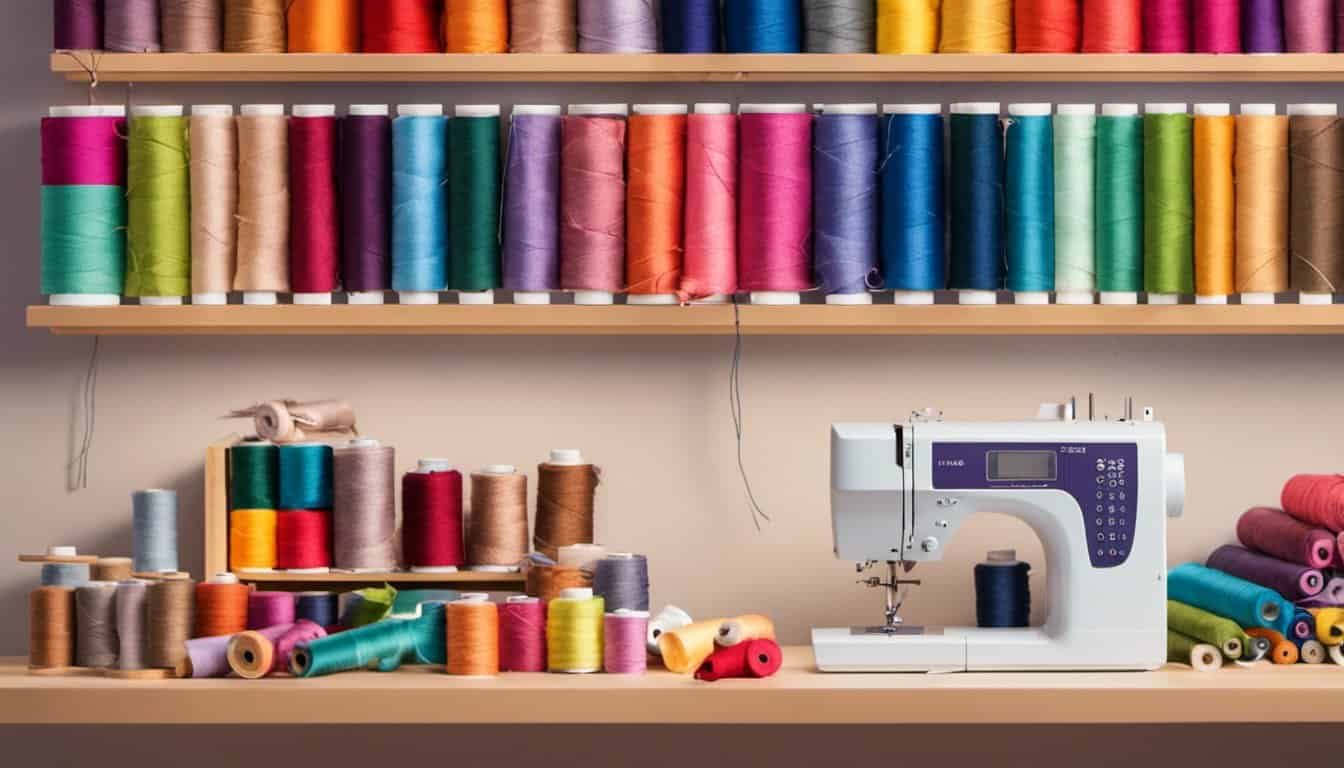Sashiko, a traditional Japanese stitching technique, offers a unique blend of artistry and functionality. Whether you’re new to embroidery or looking to expand your crafting skills, sashiko provides a beautiful and straightforward way to create stunning patterns.
Understanding Sashiko
Delve deeper into the art of sashiko to appreciate its unique qualities. Discover how this traditional technique blends beauty with practicality.
Definition and Purpose
Sashiko is a Japanese embroidery method using simple running stitches on fabric. You use sashiko to reinforce garments, extend their lifespan, and add decorative patterns. Originally, it served to mend and strengthen clothing, but today you create intricate designs that enhance both aesthetics and functionality.
History of Sashiko
Sashiko originated in Japan during the Edo period (1603–1868). Farmers and fishermen used sashiko to reinforce and repair their clothing, extending the garments’ durability. The technique featured simple running stitches, creating patterns that not only strengthened fabric but also concealed repairs from wear.
During the Meiji era (1868–1912), Japan opened its borders, leading to increased availability of imported fabrics. As a result, sashiko shifted from solely functional repairs to decorative embroidery. Artisans began crafting intricate designs, transforming everyday items into aesthetically pleasing pieces.
In the 20th century, sashiko experienced a revival as part of the Japanese folk art movement. It gained international attention for its minimalist beauty and craftsmanship. Today, sashiko blends traditional methods with contemporary patterns, making it popular among crafters worldwide for both practical and artistic projects.
Materials Needed for Sashiko
Gather the essential materials required for sashiko to ensure accurate and durable stitching.
Tools and Threads
- Sashiko Needles: Use medium-length, sharp needles, typically size 80/12 or 90/14, designed specifically for sashiko work.
- Cotton Threads: Select high-quality, tightly spun cotton threads available in various colors; choose weight 6 or 8 for optimal durability and appearance.
- Fabric: Opt for tightly woven fabrics such as cotton or linen, preferably in weights between 150 to 200 GSM, to provide a stable base for stitching.
- Sashiko Frame: Utilize a rigid wooden or adjustable sashiko frame to hold the fabric taut, ensuring uniform tension and preventing fabric distortion during stitching.
Basic Sashiko Stitches
Mastering basic sashiko stitches lays the groundwork for creating beautiful patterns. These foundational stitches are simple and versatile, perfect for your first projects.
Straight Stitch
The straight stitch forms the backbone of sashiko designs. It creates even, parallel lines that provide structure to your work.
- Threading: Use high-quality cotton thread, typically in weights 6 or 8.
- Spacing: Maintain consistent spacing, usually 4-5 mm apart, for uniformity.
- Angle: Stitch at a 45-degree angle to achieve clean, straight lines.
- Tension: Keep an even tension to prevent puckering and ensure smooth lines.
Wave Stitch
The wave stitch adds fluidity and movement to your sashiko patterns. It creates gentle curves that enhance the complexity of your designs.
- Starting Point: Begin with a straight stitch to establish the baseline.
- Curving: Gradually curve the needle’s path, maintaining even stitch length.
- Symmetry: Alternate the direction of curves to form smooth, wave-like lines.
- Consistency: Ensure each curve mirrors the others for a balanced appearance.
Getting Started with Sashiko
Begin your sashiko journey by selecting the right project and preparing your materials. These initial steps ensure a smooth and enjoyable experience.
Choosing a Project
Select a project that matches your skill level and interests. Beginners often start with simple patterns like geometric shapes or basic floral designs. Advanced crafters might choose intricate motifs or functional items such as bags and table runners. Consider the size and complexity to maintain motivation and achieve satisfying results.
Preparing Your Fabric
Prepare your fabric to ensure accurate stitching. Follow these steps:
- Choose Fabric: Opt for tightly woven fabrics like cotton or linen with a weight of 150 to 200 GSM for durability and ease of stitching.
- Cut Fabric: Measure and cut your fabric to the desired size, allowing extra margin for securing to the sashiko frame.
- Mount Fabric: Use a rigid wooden or adjustable sashiko frame to hold the fabric taut. This setup prevents distortion and maintains consistent tension during stitching.
- Mark Patterns: Transfer your chosen design onto the fabric using fabric chalk or washable markers, ensuring clear and precise guidelines for stitching.
By carefully selecting your project and preparing your fabric, you set the foundation for beautiful and enduring sashiko creations.

Tips and Techniques
Enhance your sashiko projects with these essential tips and techniques. Implement these strategies to achieve precise and beautiful stitching.
Maintaining Even Tension
Secure your fabric on a sashiko frame to maintain consistent stitch tension. Tight frames prevent fabric movement, ensuring uniform stitches across your design. Adjust the frame as necessary; loose fabric causes uneven lines, while excessive tension distorts patterns. Regularly monitor thread tension, as balanced threads enhance both durability and appearance of your sashiko work.
Choosing the Right Thread
Select high-quality cotton threads in weights 6 or 8 for optimal results. Thicker threads provide durability and stand out in patterns, while finer threads offer intricate detail. Match thread color to your fabric for a seamless look or use contrasting colors to highlight your designs. Always pre-wash your threads to prevent shrinkage and color bleeding during stitching.
Selecting Appropriate Fabric
Use tightly woven fabrics like cotton or linen with a weight of 150 to 200 GSM. Tightly woven materials support fine stitches and intricate patterns without puckering. Pre-wash fabrics to eliminate sizing and ensure accurate stitching. Cut fabric to size, allowing extra margin for mounting on a sashiko frame, which keeps it taut and prevents distortion.
Mastering Basic Stitches
Start with the straight stitch and wave stitch to build a strong foundation. The straight stitch creates clean, parallel lines ideal for geometric patterns. The wave stitch adds decorative curves and texture to your designs. Practice these stitches on scrap fabric to develop consistency before applying them to your main project. Mastery of basic stitches enables the creation of more complex and beautiful sashiko patterns.
Planning Your Design
« Revamp Your Style: 15 Creative Upcycling Ideas for Old Clothes You Need
You Won’t Believe How Easy It Is to Make a Fabric Scrap Rug – DIY Guide Inside »
Sketch your pattern on paper before transferring it to fabric. Use graph paper to maintain accurate proportions and symmetry in your design. Transfer the pattern using fabric markers or chalk, ensuring clear and precise guidelines for stitching. Plan your color scheme in advance, selecting threads that complement or contrast your fabric as desired. A well-planned design facilitates smooth execution and enhances the overall aesthetic of your sashiko project.
Finishing Your Project
Seal thread ends with a backstitch to prevent unraveling. Trim excess threads regularly to maintain a neat appearance. Remove the fabric from the sashiko frame carefully to avoid stretching or distorting the stitches. Press your finished sashiko piece with a low-heat iron to smooth out wrinkles without flattening the stitches. Proper finishing techniques ensure your sashiko work remains pristine and long-lasting.
Creative Sashiko Projects
Expand your sashiko skills with diverse project ideas tailored to various creative needs.
Home Decor Ideas
- Cushion Covers: Personalize pillows using intricate sashiko patterns for a unique touch.
- Wall Panels: Create textured designs that serve as stunning wall art in any room.
- Table Runners: Embellish dining tables with beautifully stitched runners for an elegant setting.
- Curtains: Add subtle sashiko details to curtains, increasing both aesthetic appeal and durability.
- Storage Baskets: Reinforce and decorate fabric baskets with sashiko stitches, combining functionality with style.
Conclusion
Trying sashiko is a wonderful way to connect with a rich tradition while expressing your creativity. You’ll find joy in each stitch as you create patterns that are both beautiful and meaningful.
Starting with simple projects makes it easy to build your skills and confidence. As you progress, you’ll discover endless possibilities to customize and enhance your work, making each piece uniquely yours.

Dive into sashiko and experience the satisfaction of crafting something truly special. With patience and practice, you’ll turn fabric and thread into stunning creations that showcase your talent and dedication.












